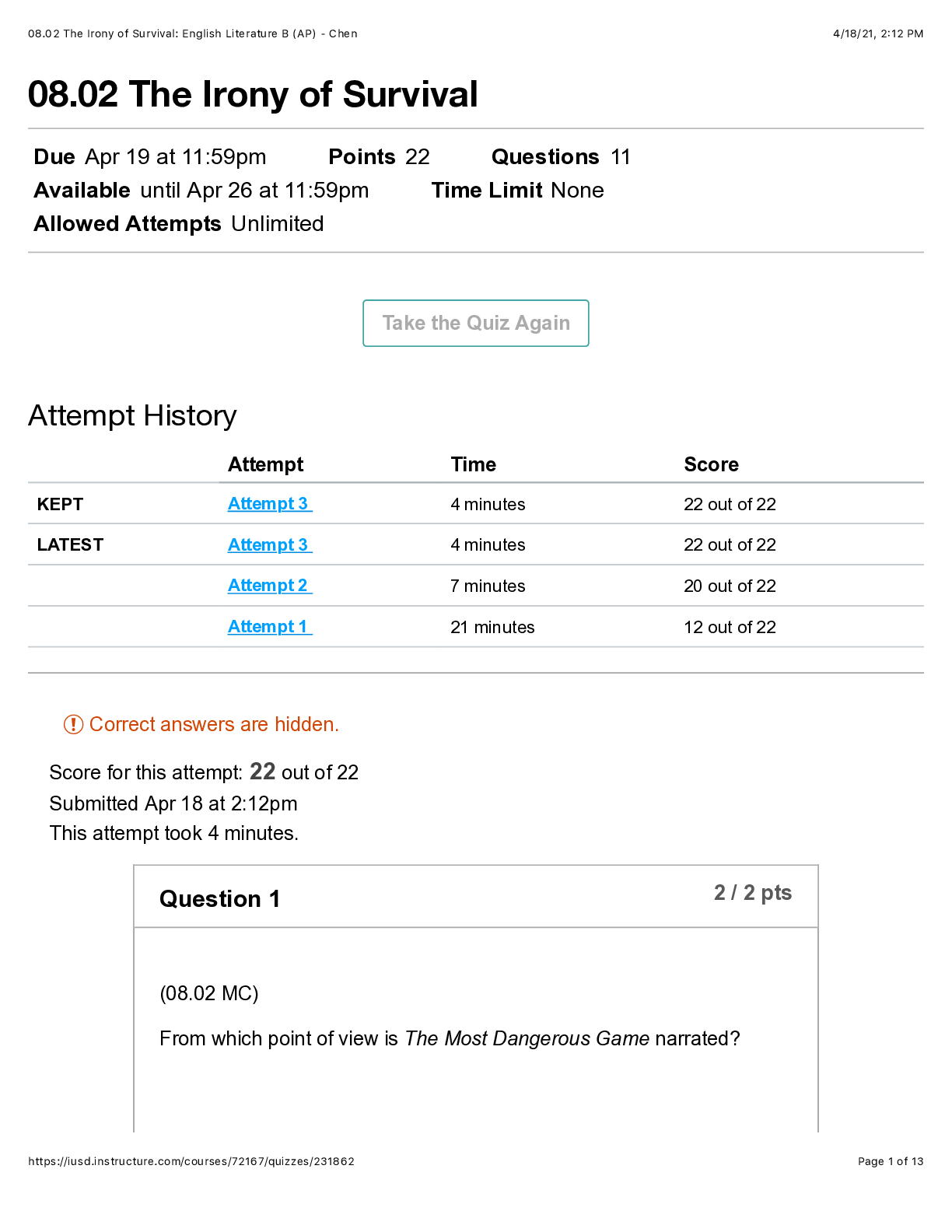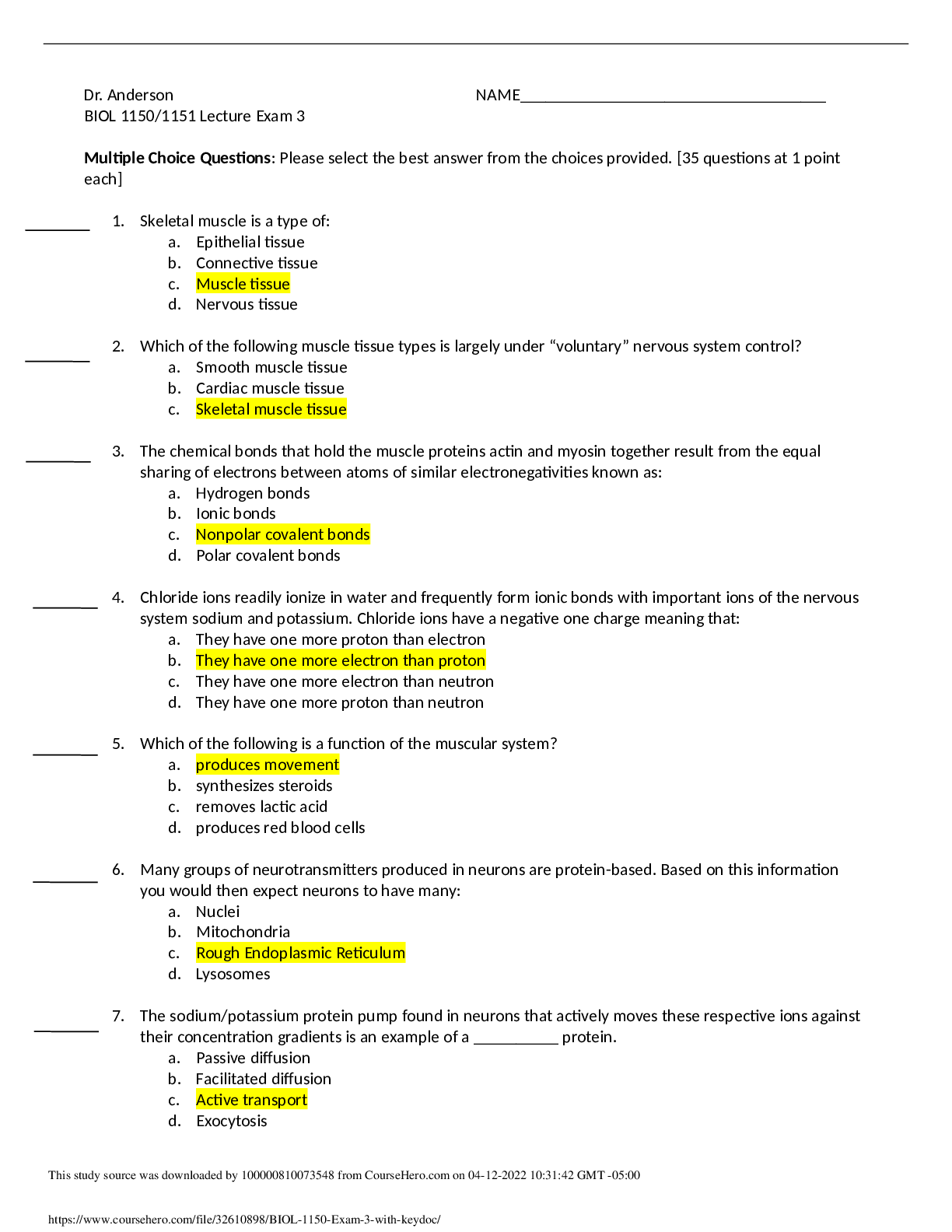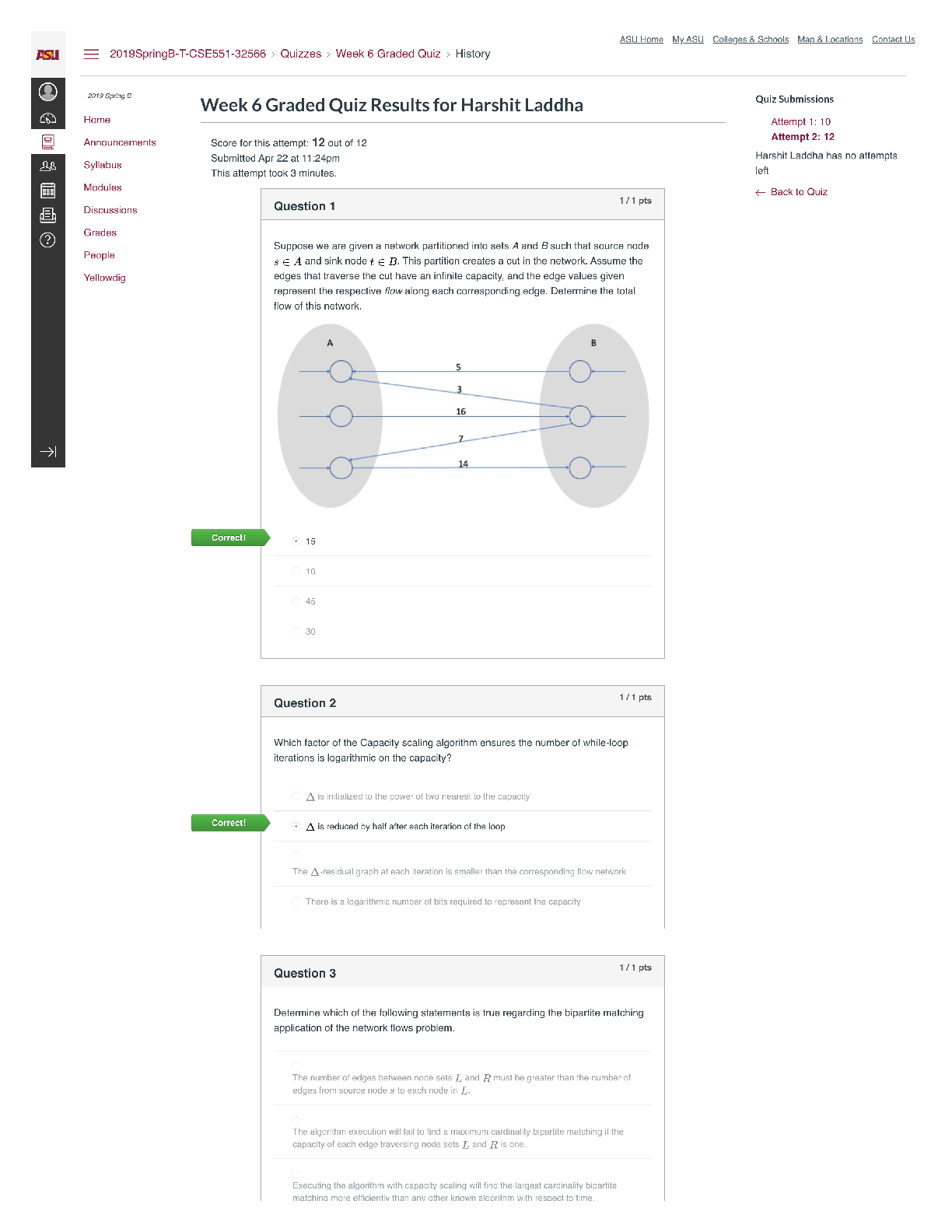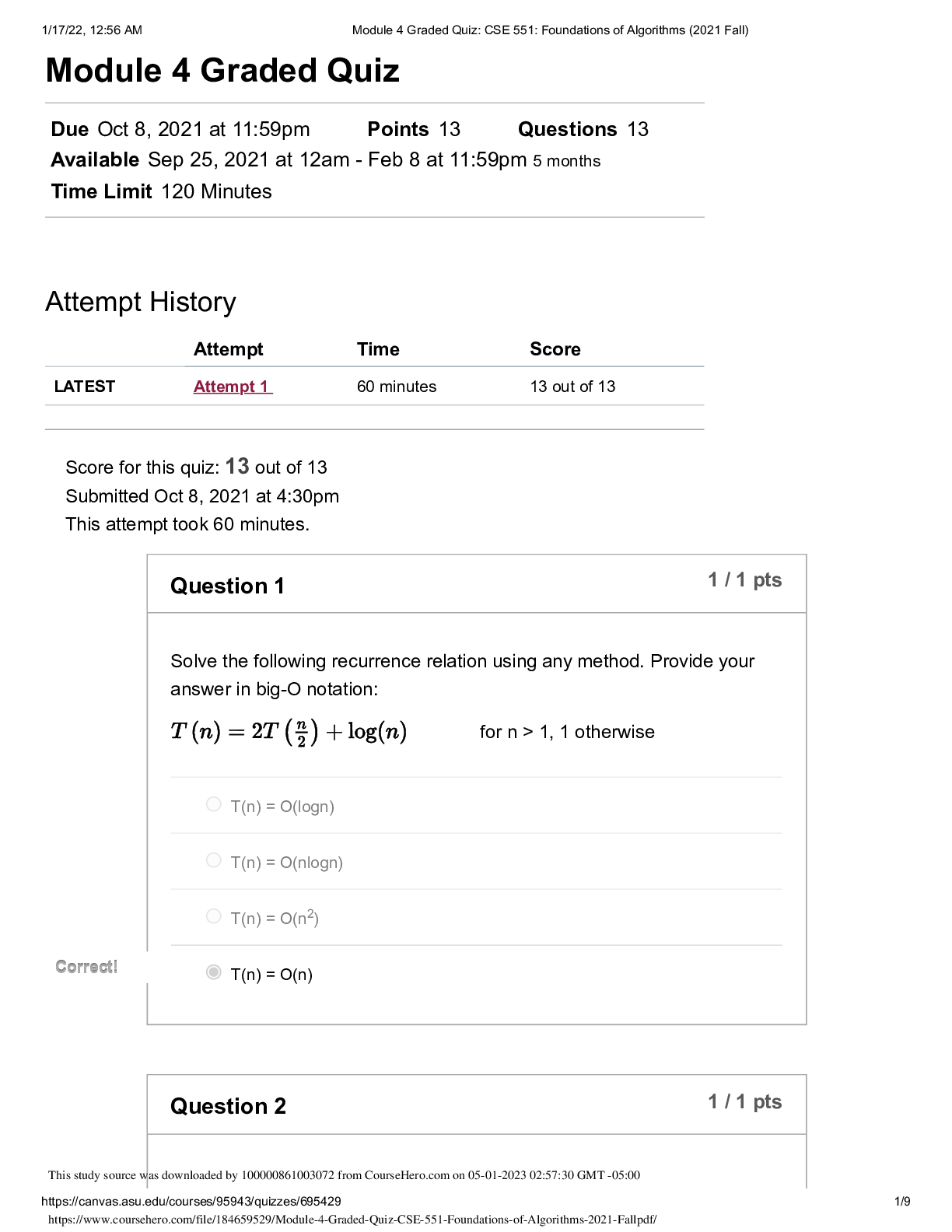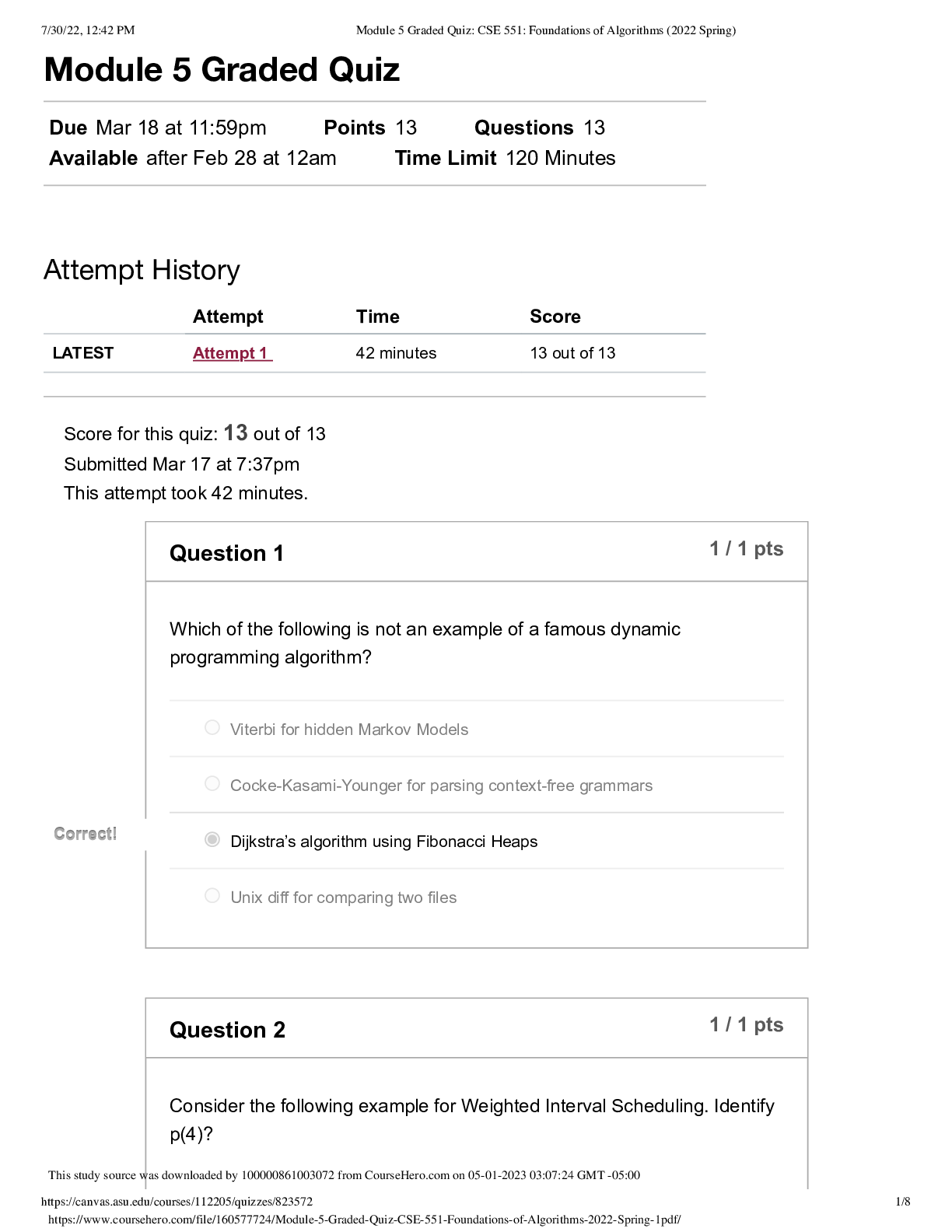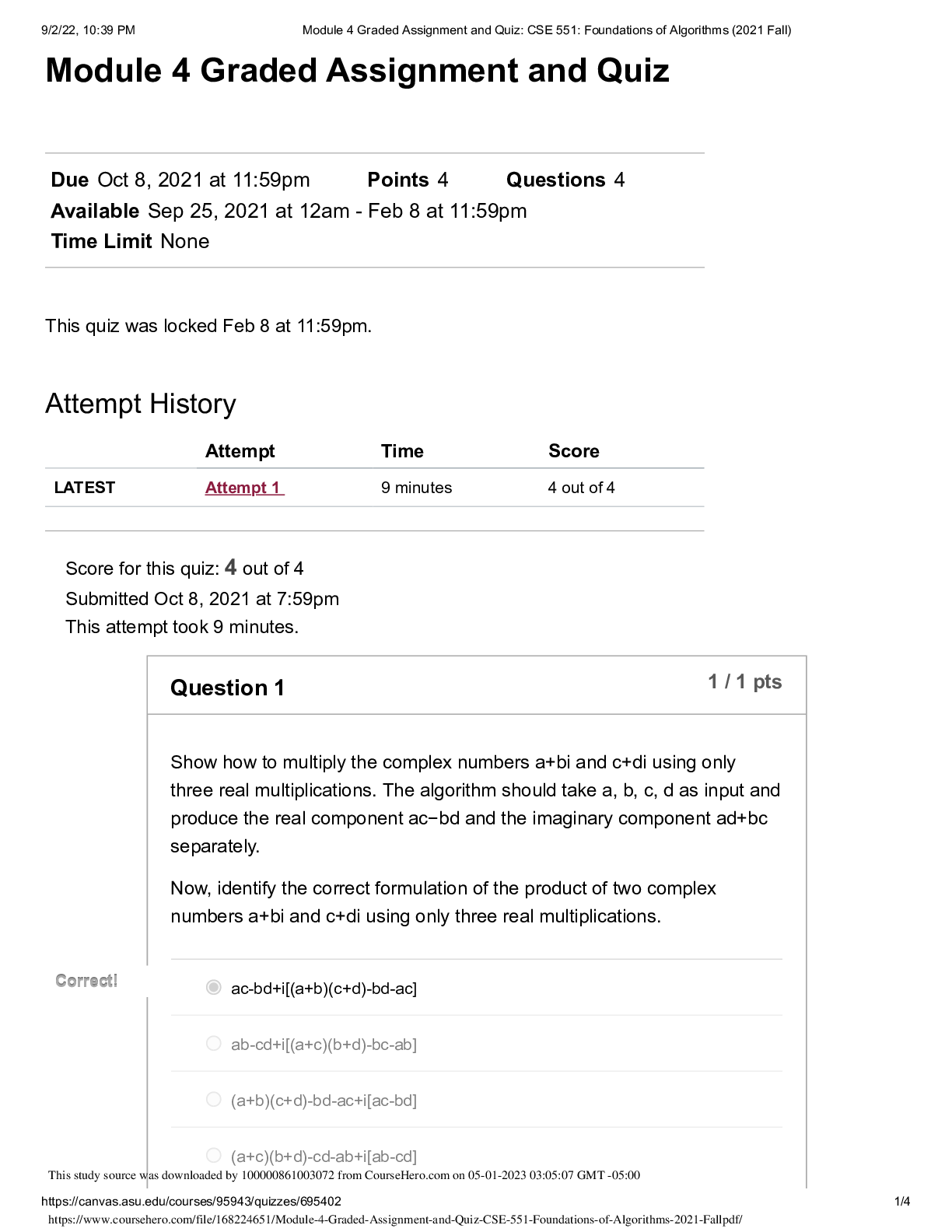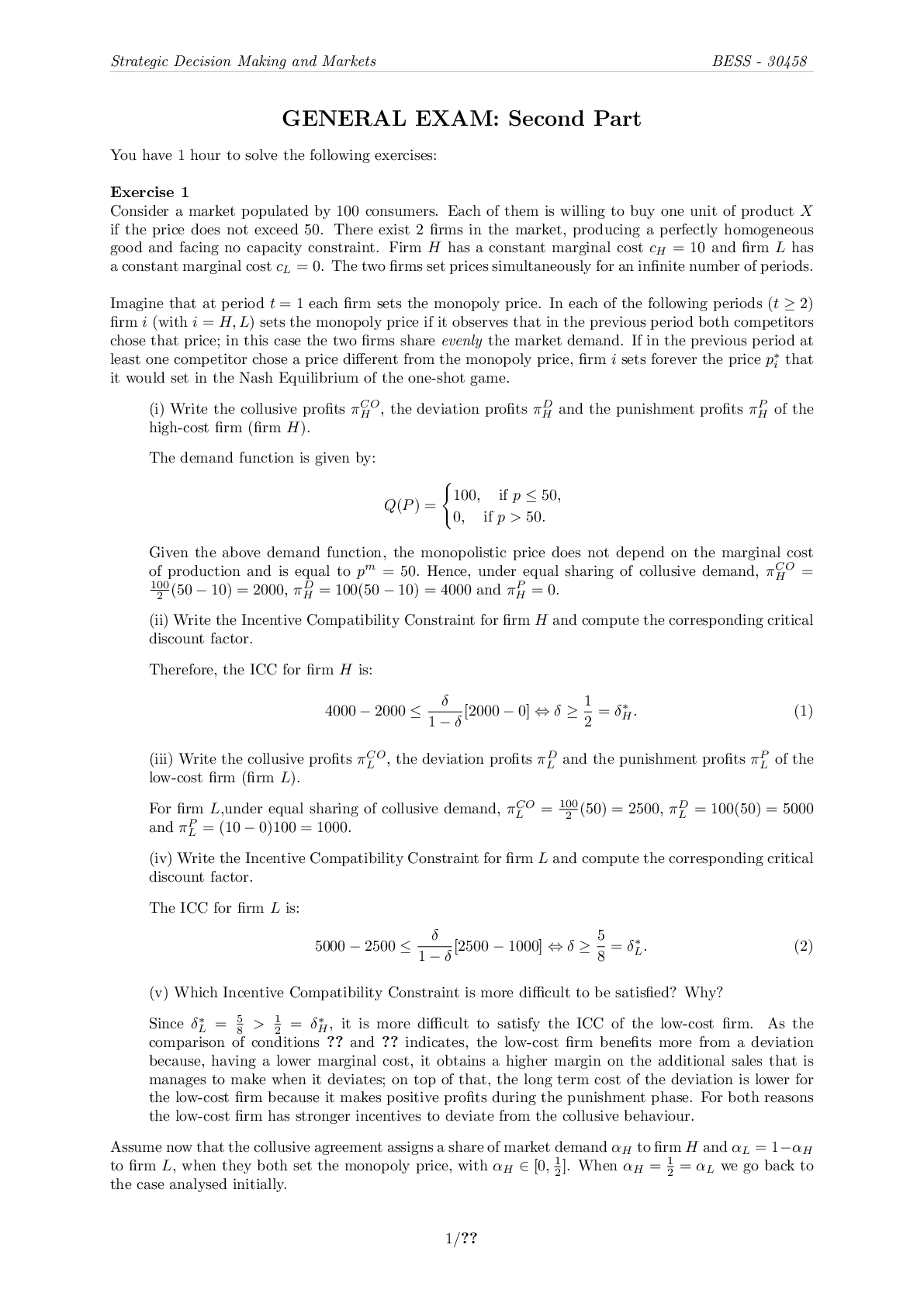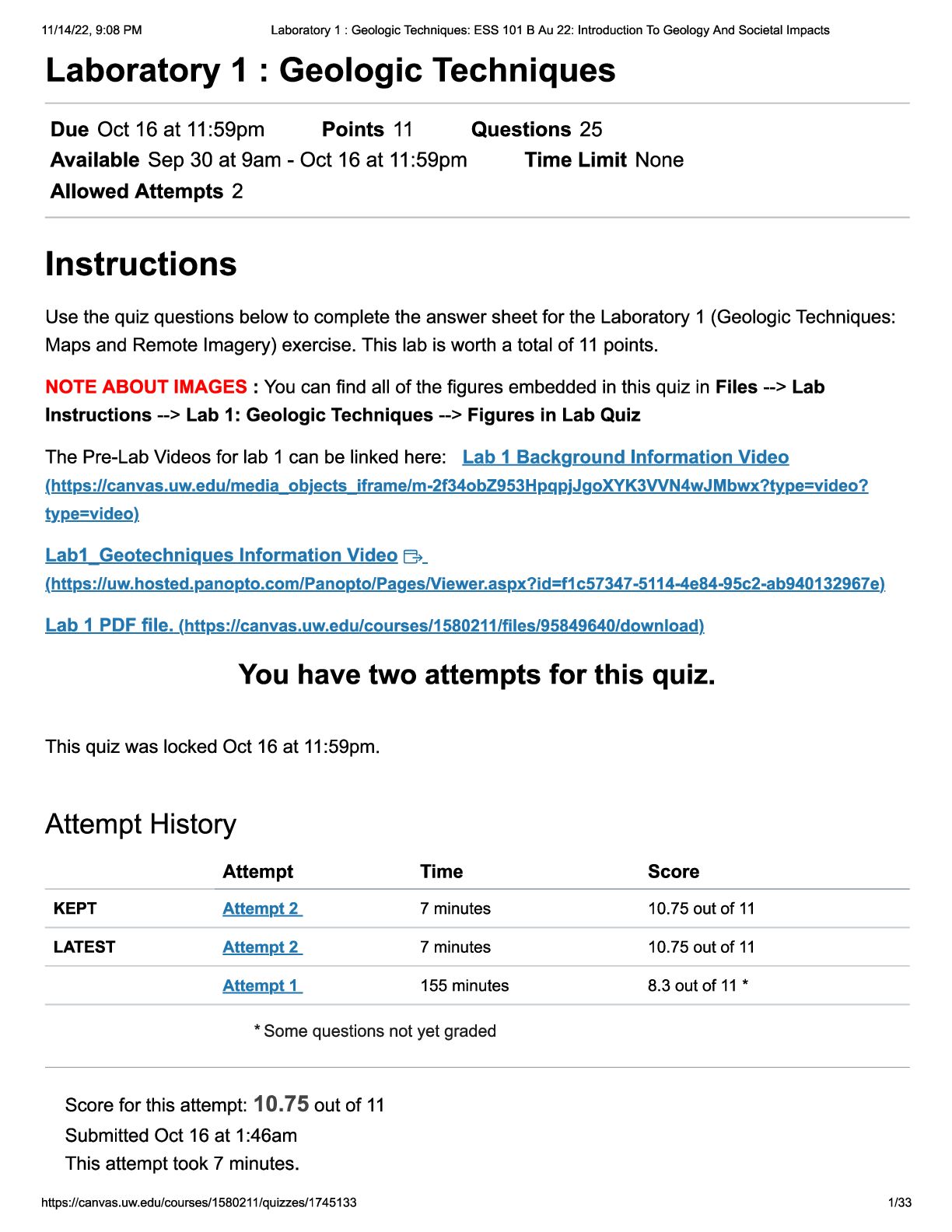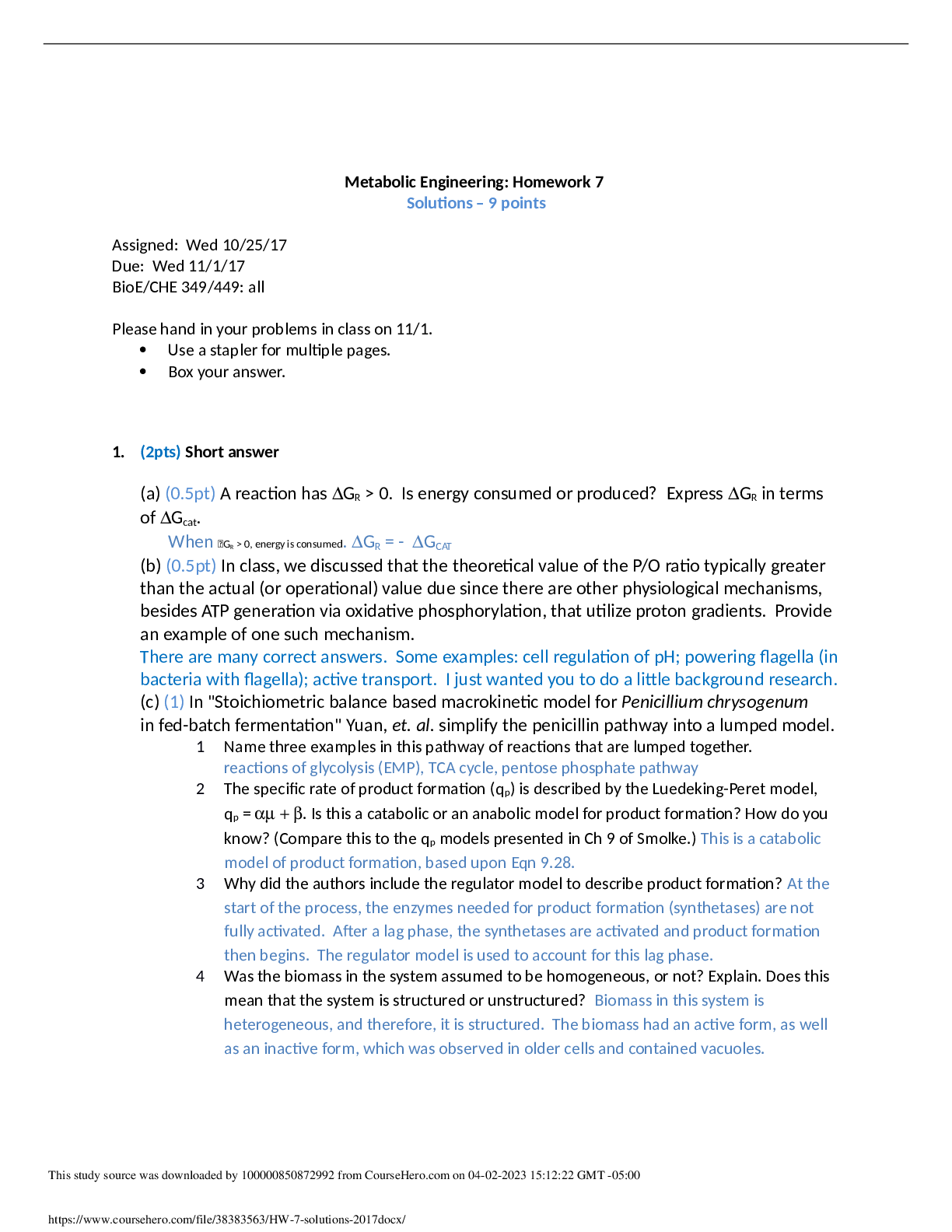BioChemistry > QUESTIONS & ANSWERS > BIOE 349 Metabolic Engineering - Metabolic Engineering: Homework 8. Q&A 100%. (All)
BIOE 349 Metabolic Engineering - Metabolic Engineering: Homework 8. Q&A 100%.
Document Content and Description Below
Metabolic Engineering: Homework 8 1. (2 points) Short answer a) (1.5) Mass spectra: Using the NIST website (http://webbook.nist.gov/chemistry/name-ser.html), show the mass spectrum for adenosine.... On the spectrum, label the molecular ion, the base peak, and three fragment ions. b) (0.5) Name one advantage of using MFA with isotopes. What are some general precautions that are needed when handling these compounds 2. (3 pts) Metabolic flux analysis in an overdetermined system Growth, product formation, and catabolism in yeast are described in the five reactions below: Reaction Description Rate 1 CH1.8O 0.58N0.16 + 0.105CO2 + 0.355NADH - 1.105CH2O - 0.16NH3 - 2 ATP - 0.231 NADPH = 0 cell growth 4 CH8/3O - 0.333NADH - 0.333ATP - CH2O = 0 glycerol production rgly 5 -ATP = 0 ATP consumption for maintenance mATP Notes: glucose = CH2O; ethanol = CH3O0.5; glycerol= CH8/3O. The intracellular products are ATP, NADH, and NADPH. a) (1pt)The rates of biomass formation, ethanol production, and glycerol production are measured. The results for the measured rates are: =0.07 h-1, reth=0.03 C-mol eth/(C-mol X - h), and rgly=0.07 C-mol gly/(C-mol X - h). Determine: 1. PP and mATP b) (1pt)Express the system using Stephanopoulos Equation (8.13). Again, the rates of biomass, ethanol, and glycerol are measured and are the same as they are in Part (a). Partition T into T11, T12, T21, T22. Partition v into v1 and v2. c) (1pt)Using your result from Part (b), what are the best estimates of v1 and v2? What are the best estimates of the rate of ethanol formation and the ATP maintenance rate? 3. (3 pts) Sensitivity analysis Using the same metabolic pathway shown in Problem 2: a) (1pt)Calculate the norm of GT using the eigenvalue method (text, Eqn 2, Box 8.1) and by using the “norm” function in MATLAB. Compare your results. b) (1pt)Calculate the condition number of GT using Eqn 8.28 and the “cond” function in MATLAB. Compare your results. Is GT well conditioned or poorly conditioned? c) (1pt)Now the rates of biomass and ethanol are measured. Calculate vc/vm . Is the rate of glycerol formation more sensitive to changes in the biomass rate or to changes in the ethanol rate? [Show More]
Last updated: 1 year ago
Preview 1 out of 6 pages
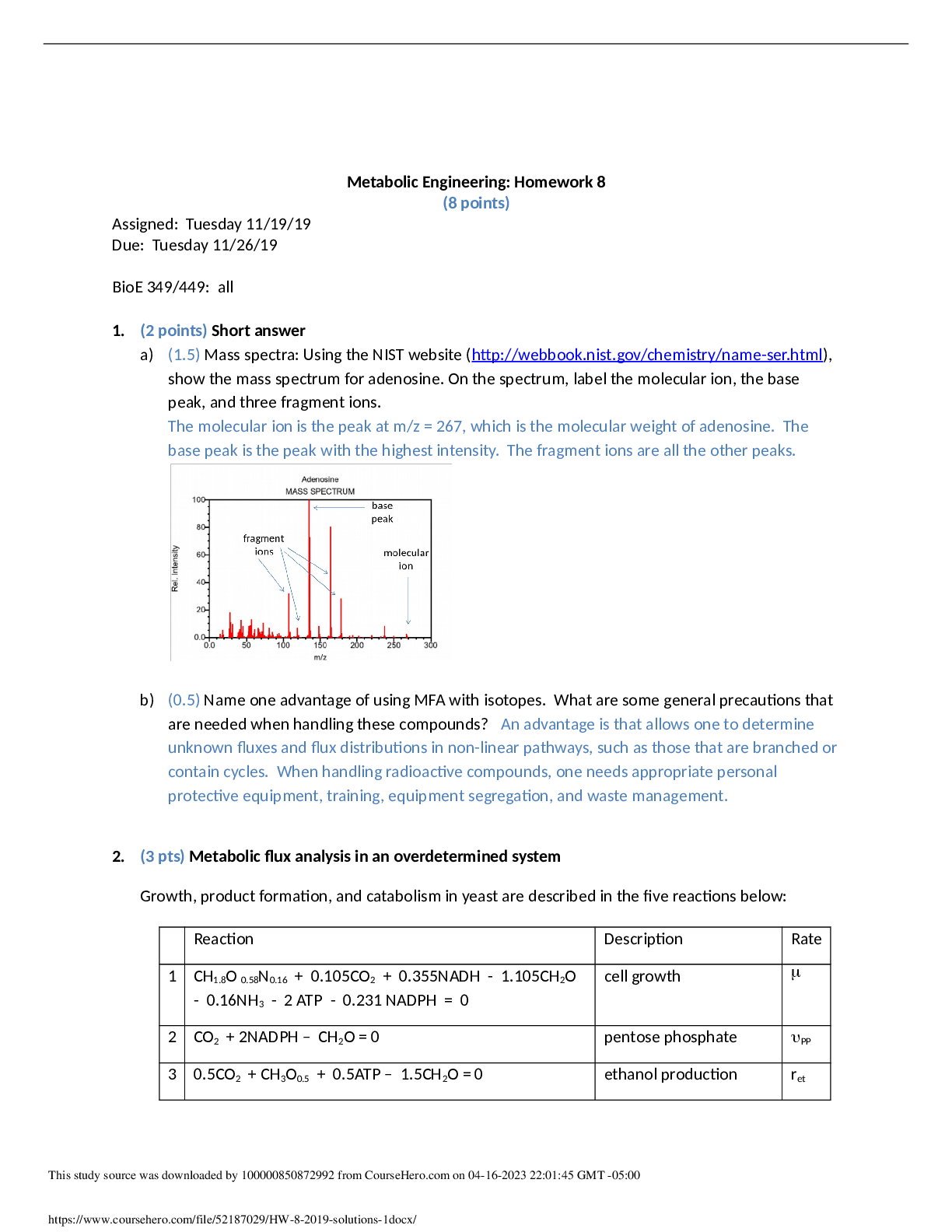
Buy this document to get the full access instantly
Instant Download Access after purchase
Add to cartInstant download
We Accept:

Reviews( 0 )
$9.50
Document information
Connected school, study & course
About the document
Uploaded On
Apr 23, 2023
Number of pages
6
Written in
Additional information
This document has been written for:
Uploaded
Apr 23, 2023
Downloads
0
Views
52


